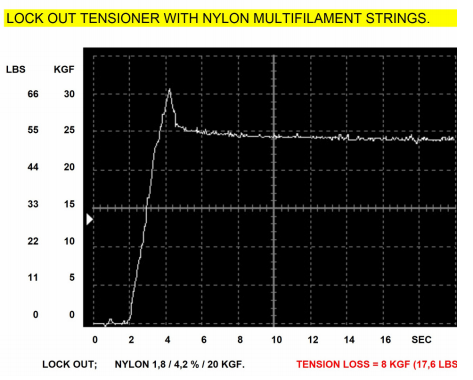Maybe i get the point now. After the time, don't need re-horizon. I agree with that, if it is elongated not to much "hardly noticible". e.g. less than 10degree almost same. 60*cos(8)=59.4. And I agree with that it really depend on the stringer's good experience.
Maybe I should discuss how to use a machine to get a accurate tension, not which one is more accurate, because the striger's experience is most important
Maybe I should discuss how to use a machine to get a accurate tension, not which one is more accurate, because the striger's experience is most important
You still don't get it. If you do it right, the wait for elongation drop (10 seconds or whatever) takes the dropweight from slightly above horizon to horizon (i.e. exact weight and location of bar). If (and I say "if") the bar goes past horizontal and stops stretching the string and you ratchet backup, I always ratchet up and see if it drops again and usually it doesn't or is hardly noticible. It's the technique that's used. It's not as cut and dry as just let it drop past horizontal and then lift it back up. This is why I said that if your skill with your machine isn't good enough, you're going to get crappy results. Being OCD, it's not very hard for me not to rush a string job and pay close attention to repetition of steps for each pull. So again, you're overlooking a few factors here that aren't as you perceive them to be.


